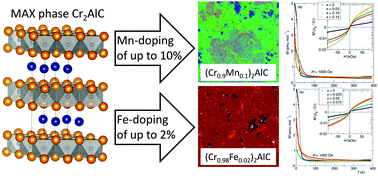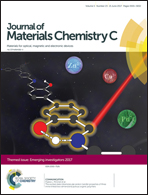Non-conventional synthesis and magnetic properties of MAX phases (Cr/Mn)2AlC and (Cr/Fe)2AlC†
Abstract
A few years after the theoretical prediction of magnetic MAX phases, a number of such materials have been experimentally reported, especially in the form of thin films. Yet, due to a relatively small number of studies, we have only just begun to discover the intriguing magnetic properties that are associated with this class of materials. The preparation of bulk MAX phases with later transition metals has been proven to be particularly challenging. Consequentially, there is a great need to develop synthetic strategies to obtain the respective materials in suitable quantities for magnetic investigations. Here, bulk Mn- and Fe-substituted Cr2AlC are prepared using non-conventional synthesis methods such as microwave heating and spark plasma sintering. Synchrotron X-ray diffraction coupled with detailed elemental analyses is used to confirm the successful doping of the MAX phase with the later transition metals as well as to elucidate the microstructure of the obtained dense materials. 57Fe Mössbauer spectroscopy data are presented showing signals of the doped MAX phase and Fe-containing secondary phases. Based on PPMS and SQUID measurements the non-trivial magnetic behavior of the obtained samples is discussed in the context of the existing studies.

- This article is part of the themed collections: Celebrating Excellence in Research: Women of Materials Science and Journal of Materials Chemistry C Emerging Investigators


 Please wait while we load your content...
Please wait while we load your content...